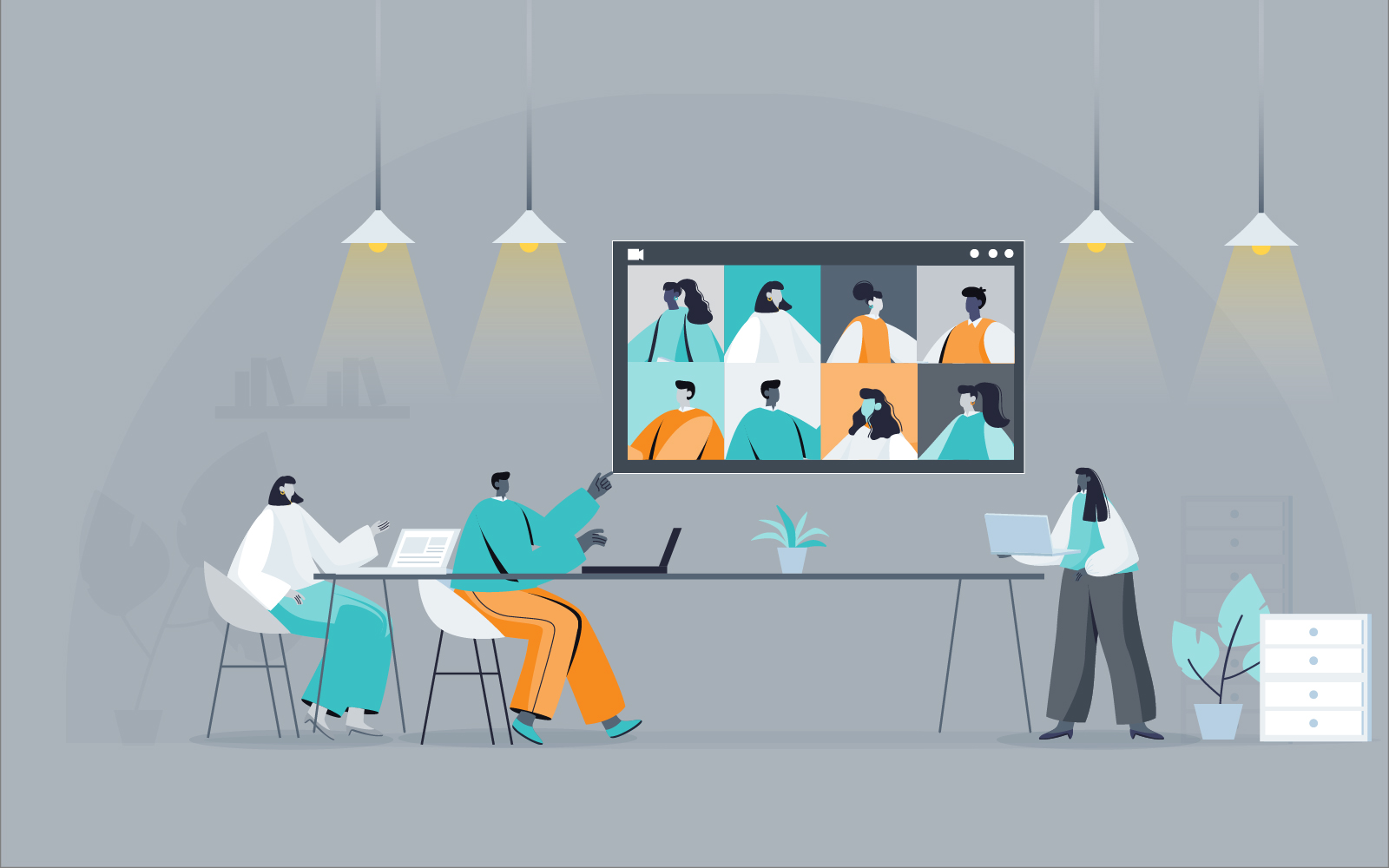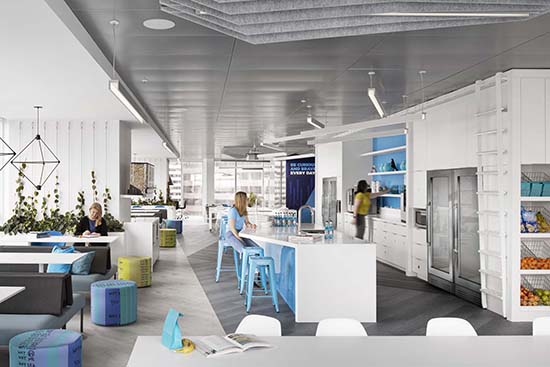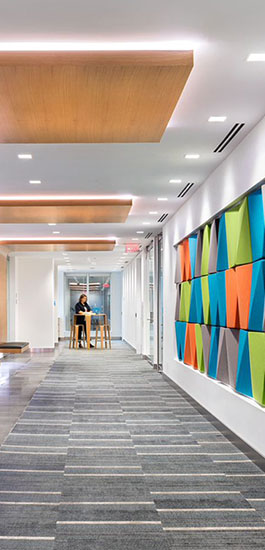ARTICLE
Taking an activity-based approach for our hybrid-office design
The normalization of hybrid work has made it clear, that for many employees, location should not define how work gets done. This shift in working style has changed our way of thinking about the purpose of the workplace. To address this shift, our design approach has gone from office-centric to people-centric, and focused on the types of activities we need to accomplish in our daily working lives such as collaborating, socialization, and focused work (see graphic below). This activity-based approach to workplace operations includes the hybrid-working model, which utilizes both in-office and remote work to offer flexibility and support to employees through policies, programming, and scheduling.
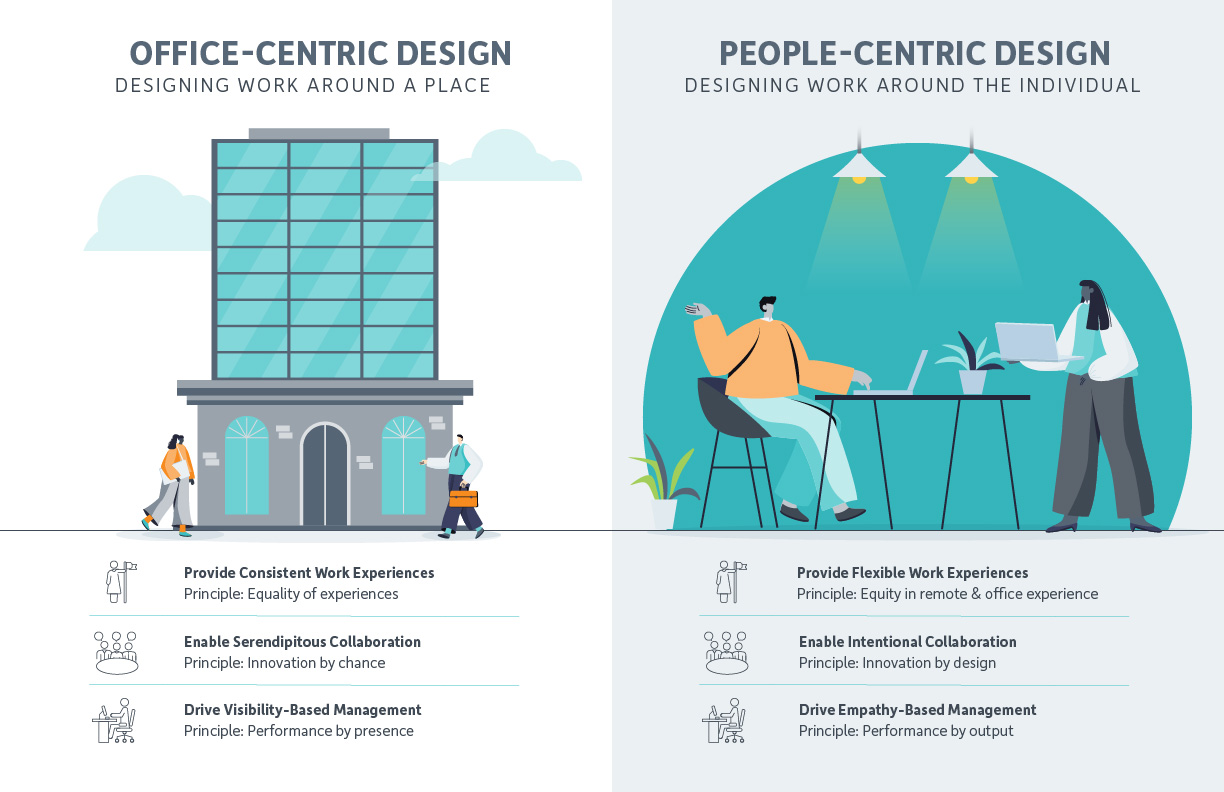
Testing a hybrid office design with our Calgary studio
With the impending relocation of our Calgary studio in April 2023 to The District, we used our remaining time in our current space to pilot an activity-based office design supported by hybrid scheduling. The pilot was a temporary solution delivered through incremental change and communication with all levels of the organization. Piloting a hybrid-working model is the perfect low-cost solution for any organization looking to try this new way of working. The learnings from our pilot and the process we followed are helpful to other workplaces that are in search of change but may require validation and proof of concept to begin their transition.
Our process included a firmwide workplace strategy initiated during the pandemic, with focus groups, communication with all levels of the organization, and surveys to gain insights into our working behaviours, pain points, and opportunities to enhance our future workplace. We performed an additional survey after four months of implementation to evaluate the pilot project by testing assumptions and finding ways to improve our approach.
Addressing improvements through our hybrid office pilot
Post the pandemic, we faced two main challenges with our existing space – ensuring team-wide digital connectedness and overcoming in-office employee isolation. This meant investing in and adopting technology that aided productivity, flexibility, and provided the freedom to move to alternative workplace settings within the office. Additionally, our existing large, unpopulated space had become only 25% utilized following our return to the office. This was not conducive to creating a sense of togetherness that employees stated they were excited to regain. And while collaboration was the main goal of nearly all employees, enabling a diversity of working styles also proved critical to the new design. For instance, employees voiced concerns about acoustics and background noise when conducting focused work, something that a physical intervention needed to overcome.
Implementing the new workplace design
The most significant change we made to our office was reducing open desk space by 40 per cent. This meant 55 staff sharing 32 desks and closing off nearly a third of our current office space. This led to a concentration of people in a smaller area and created a higher sense of connection, without the feeling of overcrowding. We added new open collaboration spaces and our meeting rooms were transformed and classified into three typologies; forums, team rooms, and huddle rooms, based on the equipment within them and their intended use. To ensure digital equity when collaborating in teams between in-office and remote workers, we outfitted two huddle rooms with AV equipment including monitors, cameras, and microphones. These 3-person rooms became some of the most utilized spaces during the pilot project.
We also repurposed our client reception and café area to create a more inclusive community space that supports collaboration and social connection for staff as well as clients. Core to the design is a large island which has provided a space to celebrate birthdays, and host lunches and parties. The island invokes a feeling of gathering around the kitchen countertop and creates a sense of home.
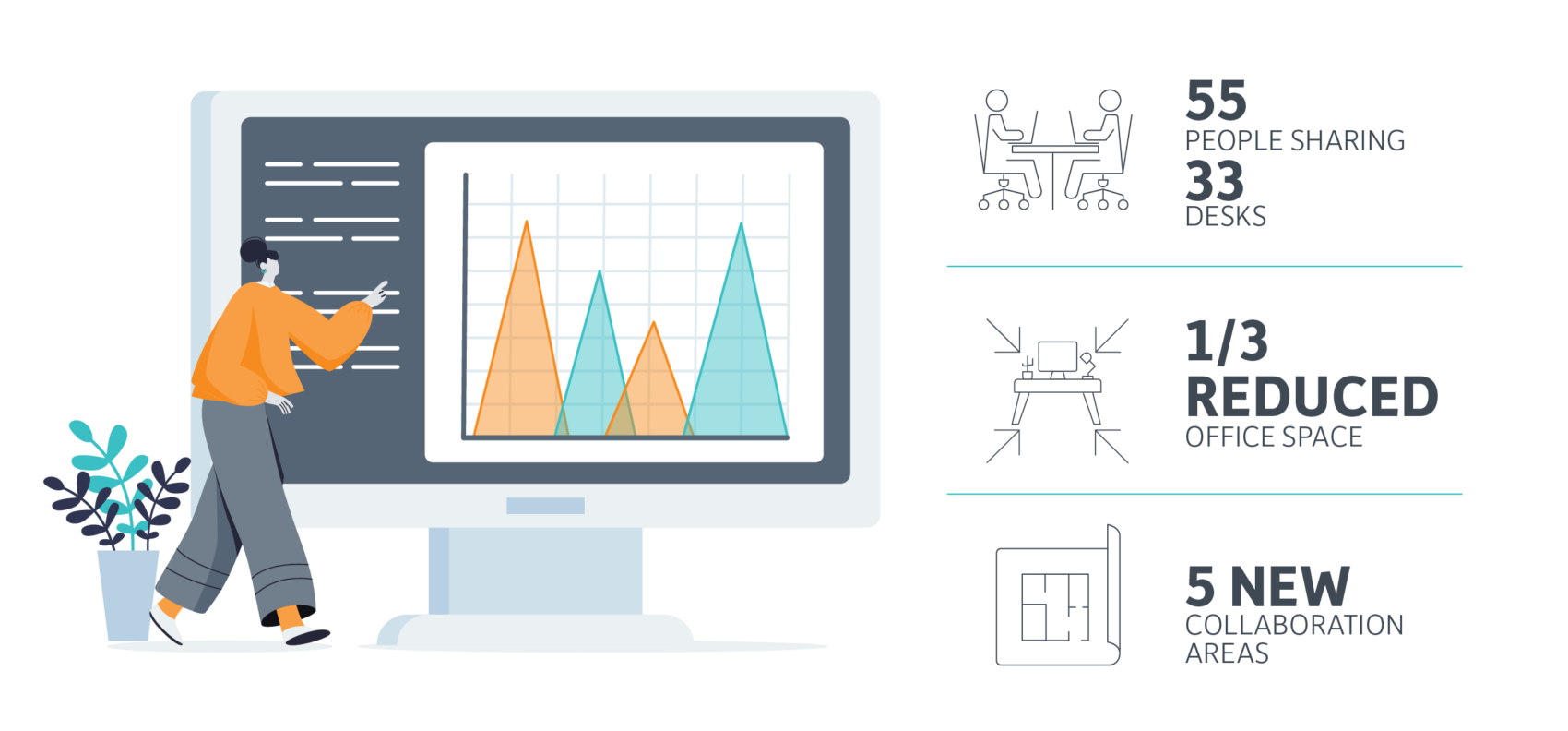
Our new activity-based office design, supporting a hybrid-working model
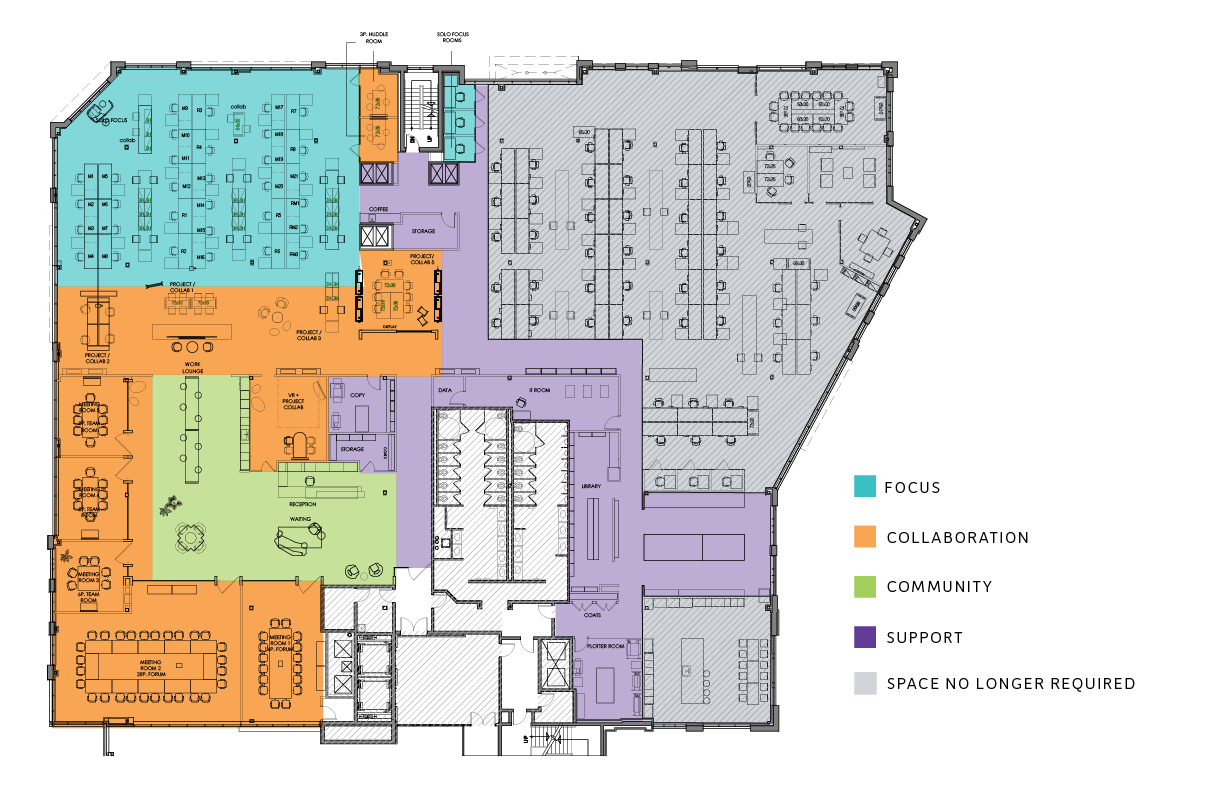
Benefits to the business from our hybrid office design pilot
This pilot project allowed us to test activity-based working with hybrid scheduling, a proven component of our resilient workplace methodology we’ve developed for several of our clients. Through this process, we also tested new workplace behaviours such as using a mobile app to book a desk or a collaboration space for meetings, using technology for digital-physical integration (web conferencing), and combining focus work with conversational collaboration in proximity.
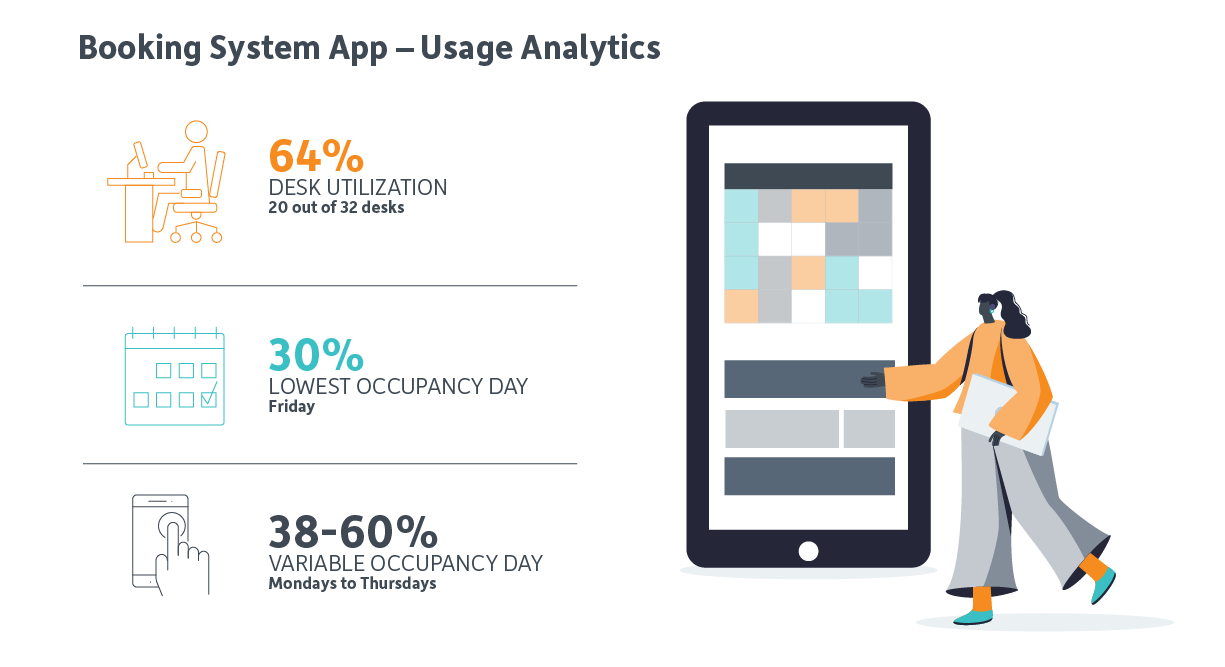
Closing the feedback loop with the team
Eighty per cent of our team gave a positive rating of the pilot in our post-implementation survey, and 60% said they have increased their time in the office. Between August 1st and October 1st 2022, there was an average desk utilization rate of 64% (20 out of 32 desks) which varied based on the weekday. Qualitative observations such as seeing employees regaining an overall sense of togetherness through the hybrid pilot is also a positive sign. With our current lease ending and the design of our new studio in progress, the pilot provided valuable confirmation that this new way of working delivers incredible value for organizations and employees.
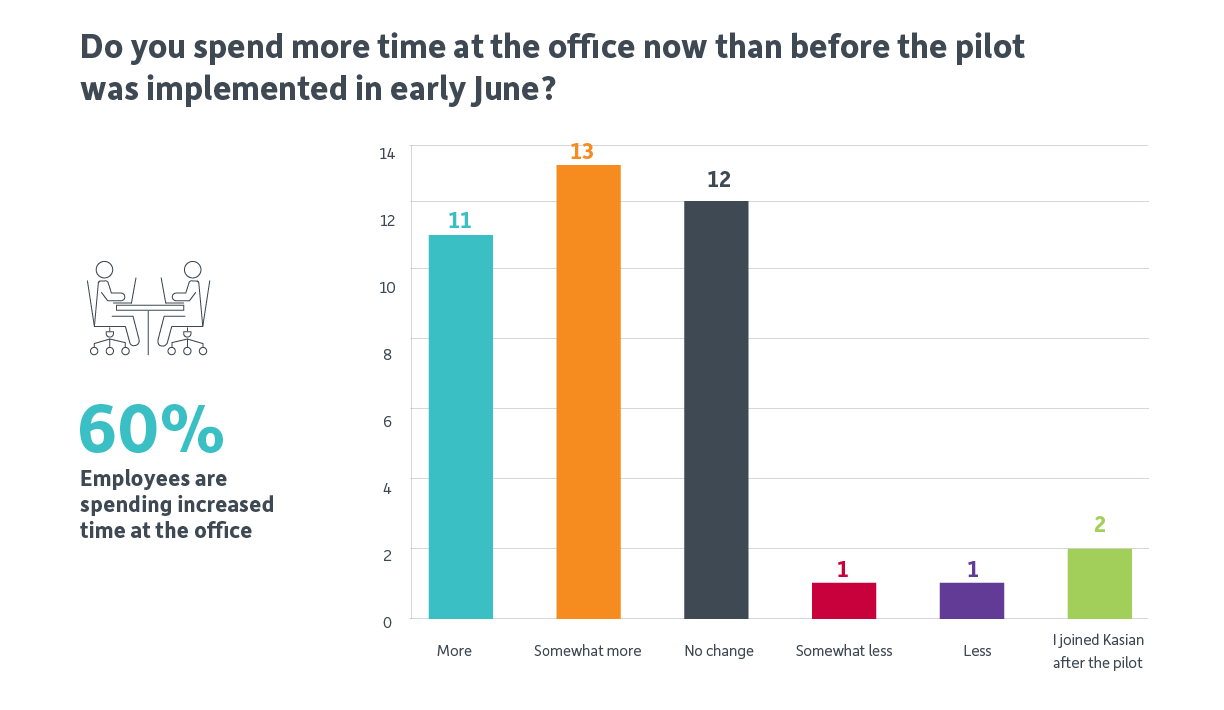
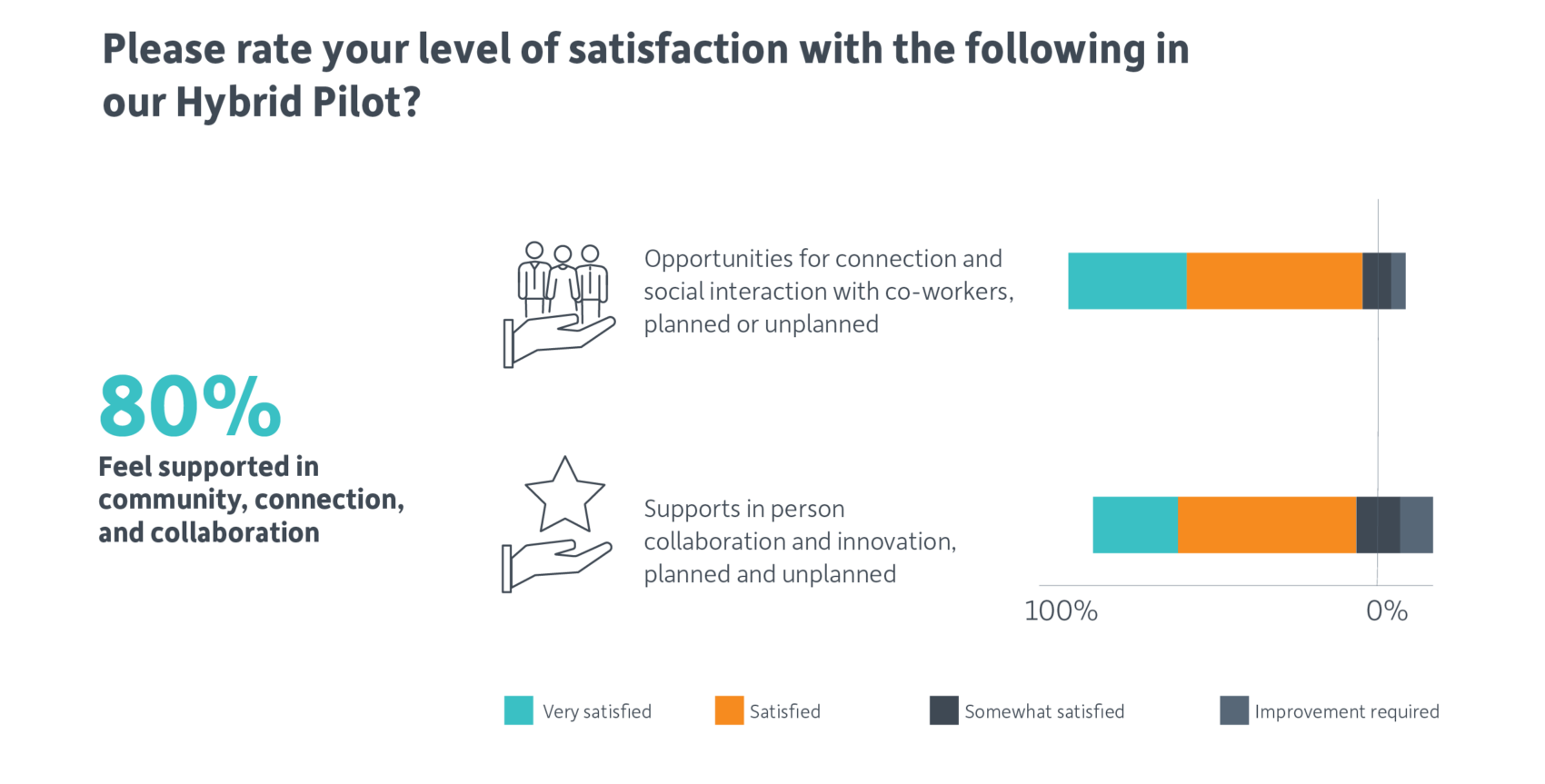
Summary of learnings from our hybrid-office pilot
1. Start by building an understanding of your employee behaviour and organizational goals.
2. Leverage your existing assets, from your real estate to your technology and office furniture.
3. Create alternative work settings to support a variety of activities, including focus, community and collaboration.
4. Provide technology to support inclusive mobility and connectivity for all workers.
Keen to hear more about our hybrid office pilot? Get in touch to discuss how we can help you with your workplace transformation.
Read Next
Announcement
Our interior designers recognized by IDC
By: Sally Mills , Christine Weber
Presentation
We’d love to get to know you
Get in touch
"*" indicates required fields
Get in touch
Share

